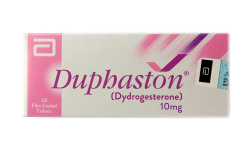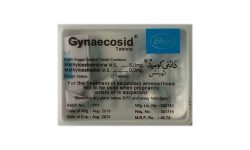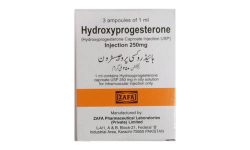Diane-35 Tablets by Bayer
Looking for an effective treatment for acne, excessive hair growth, and hormonal imbalance? Diane-35 Tablets by Bayer, available at Irfan Traders, are a clinically proven hormonal therapy used for managing polycystic ovary syndrome (PCOS), acne, and contraception.
As one of the leading pharmaceutical exporters in Pakistan, Irfan Traders ensures the global supply of high-quality medicines, including the widely prescribed Diane-35 Tablets by Bayer.
Description
Diane-35 Tablets by Bayer | Irfan Traders – Trusted Pharmaceutical Exporters in Pakistan
What Are Diane-35 Tablets?
Diane-35 is a combination hormonal medication containing Cyproterone Acetate (anti-androgen) and Ethinylestradiol (synthetic estrogen). It is widely used for treating hormonal conditions, acne, excessive hair growth (hirsutism), and polycystic ovary syndrome (PCOS) while also functioning as an oral contraceptive pill.
Key Uses of Diane-35 Tablets:
✔ Treatment of Acne & Oily Skin – Reduces androgen (male hormone) levels that cause acne breakouts.
✔ Hirsutism Management – Controls excessive hair growth in women caused by hormonal imbalance.
✔ PCOS Symptom Relief – Helps regulate irregular menstrual cycles and hormonal disorders.
✔ Contraceptive Effect – Works as a birth control pill to prevent pregnancy.
✔ Hormonal Balance Therapy – Used in cases of high androgen levels affecting reproductive health.
📌 Learn more about Cyproterone Acetate from Drugs.com (nofollow outbound link).
Active Ingredients in Diane-35 Tablets
Each Diane-35 Tablet contains:
- Cyproterone Acetate 2mg – An anti-androgen that reduces excess male hormones responsible for acne, PCOS, and unwanted hair growth.
- Ethinylestradiol 35mcg – A synthetic estrogen that regulates menstrual cycles and prevents ovulation.
Additional Ingredients Include:
✔ Lactose Monohydrate – Improves tablet stability.
✔ Magnesium Stearate – Enhances consistency.
✔ Titanium Dioxide (E171) – Ensures tablet quality.
📌 Find out more about Ethinylestradiol at MedlinePlus (nofollow outbound link).
Why Choose Diane-35 Tablets?
Diane-35 is clinically proven to provide hormonal balance and skincare benefits. Here’s why it is highly recommended:
✅ Dual Benefit – Acne Treatment & Birth Control – Effectively manages hormonal acne while preventing pregnancy.
✅ Regulates Hormonal Disorders – Treats PCOS, menstrual irregularities, and androgen excess.
✅ Reduces Excessive Hair Growth (Hirsutism) – Controls unwanted hair caused by high androgen levels.
✅ Clinically Tested & Trusted – Recommended by dermatologists and gynecologists.
✅ Improves Skin Health – Reduces oil production, leading to clearer skin over time.
📌 For more details, visit WebMD (nofollow outbound link).
How to Use Diane-35 Tablets by Bayer?
💊 Dosage & Administration:
- One tablet daily at the same time each day, for 21 days, followed by a 7-day break before starting a new pack.
- For Acne & Hirsutism Treatment: Treatment duration depends on severity and should be monitored by a doctor.
- For PCOS: Take as prescribed, typically over several months for hormonal stabilization.
- As a Contraceptive: Strict adherence to daily intake is required to ensure effectiveness.
Important Instructions:
✔ Take with water, preferably after meals.
✔ Do not miss doses to maintain effectiveness.
✔ If a dose is missed, take it as soon as possible within 12 hours.
✔ Consult your doctor before stopping medication.
📌 Check the official dosage guidelines at Mayo Clinic (nofollow outbound link).
Precautions & Side Effects
Precautions:
❗ Do not use if pregnant or breastfeeding.
❗ Not suitable for women with a history of blood clots, heart disease, or severe migraines.
❗ Consult a doctor before use if you have liver disease or diabetes.
Possible Side Effects:
⚠ Common Side Effects:
- Mild nausea or bloating.
- Breast tenderness or slight weight changes.
- Headaches or mood changes.
⚠ Serious Side Effects (Seek Medical Help):
- Severe leg pain or shortness of breath (signs of blood clots).
- Yellowing of skin (liver-related issues).
- Sudden vision changes or migraines.
📌 For more details on side effects, visit NHS (nofollow outbound link).
Why Buy Diane-35 Tablets from Irfan Traders?
At Irfan Traders, we guarantee 100% authentic Diane-35 Tablets by Bayer, offering fast and secure international shipping.
✅ Certified & Genuine Products – Sourced directly from Bayer.
✅ Wholesale Supply & Bulk Discounts – Ideal for pharmacies & distributors.
✅ Regulatory Compliance – Meets WHO pharmaceutical standards (nofollow outbound link).
✅ Global Shipping – Reliable delivery to international markets.
✅ Dedicated Customer Support – Assistance with orders & queries.
📩 For bulk orders, contact us today!
🔹 Contact Us to inquire about pricing and delivery.
Wholesale Orders for Diane-35 Tablets by Bayer
📦 Looking for Diane-35 Tablets in bulk?
✔ Available for export at Irfan Traders.
✔ Wholesale Discounts for Distributors & Pharmacies.
✔ Fast & Secure International Shipping.
✔ Guaranteed Quality & Authenticity.
📌 Order today for the best deals on Diane-35 Tablets!
Order Diane-35 Tablets Today!
At Irfan Traders, we guarantee fast, secure, and affordable access to Diane-35 Tablets by Bayer.
📩 Contact us today for wholesale pricing and international shipping! 🚀






Https://www.waste-Ndc.pro/community/profile/tressa79906983/ –
Great information. Lucky me I came across your blolg by
accident (stumbleupon). I have bookmarked it for
later! https://www.waste-ndc.pro/community/profile/tressa79906983/